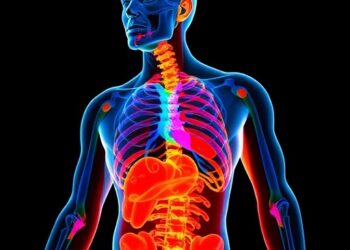While many serious cases of COVID-19 are marked by respiratory distress and dangerously low blood oxygen levels — a condition referred to as hypoxia — the occurrence of “silent or happy hypoxia” affecting a subset of patients has puzzled experts since the pandemic’s onset.
While many serious cases of COVID-19 are marked by respiratory distress and dangerously low blood oxygen levels — a condition referred to as hypoxia — the occurrence of “silent or happy hypoxia” affecting a subset of patients has puzzled experts since the pandemic’s onset.
Now, computational modeling research spearheaded at New Jersey Institute of Technology (NJIT) is helping uncover the elusive cause of “happy hypoxia” in COVID-19 patients, revealing why some individuals may experience critically low blood-oxygen saturation without the typical struggle to breathe.
In findings published in the journal Biological Cybernetics, researchers suggest that elevated hemoglobin levels in certain patients’ blood might play a key role in enabling the respiratory system to sustain low oxygen levels without prompting distress signals associated with dyspnea, or shortness of breath.
“Mathematical modeling of the respiratory control system allows us to explore hypotheses about how changes in chemosensory inputs affect the generation of breathing rhythms,” said Casey Diekman, the study’s corresponding author and NJIT associate professor of mathematics. “We focused on dysregulation of oxygen sensation as the key contributor to silent hypoxemia.”
To learn more, Diekman joined up with Christopher Wilson at Loma Linda School of Medicine and Peter Thomas from Case Western Reserve University. The team adapted a mathematical model Diekman first developed in 2017, describing it as a “closed-loop control system” for simulating the effects of silent hypoxemia on the respiratory system.
The model is a system of ordinary differential equations representing the electrical activity of the respiratory central pattern generator (CPG) in the brainstem that drives a pool of motor neurons, leading to changes in lung volume, lung oxygen and blood oxygen, explained Diekman.
“In turn, the blood oxygen level affects the amount of excitatory input sent to the CPG through a chemosensory feedback pathway,” said Diekman. “The model includes parameters that reflect the gain of the oxygen sensing input pathway, hemoglobin binding affinity, unloaded lung volume, and the speed of the flux of oxygen from the lung to the blood.”
This closed-loop control model enabled the researchers to systematically investigate how different aspects of the system affect the partial pressure of oxygen in the blood and the point at which the respiratory system collapses as metabolic demand is increased. Using their model, the team manipulated various parameters, ultimately pinpointing hematocrit — the concentration of hemoglobin in the bloodstream — as a crucial factor in inducing silent hypoxemia.
“Our study suggests that COVID-19 patients with silent hypoxemia might also have elevated levels of hemoglobin in their blood, which might be a protective response to the infection,” said Wilson, co-author of the study.
“We know that elevated levels of hemoglobin in populations living at high altitude are part of the body’s attempt to keep muscles, organs and the brain supplied with enough oxygen despite having less oxygen in the air at high elevations,” added Thomas. “When the effects of COVID-19 make it harder to get oxygen out of the air and into the tissues, even at sea level, it could be that increasing hemoglobin levels offers a similar benefit.”
For now, the team says that emergency rooms should begin measuring hematocrit levels for COVID-19 patients to improve patient outcomes.
“Unfortunately, most emergency rooms don’t record the hemoglobin levels in their patients, although this would not be too difficult to do,” said Diekman.
“We would love to see emergency rooms treating COVID-19 patients collect data on hematocrit levels,” added Thomas. “It could give us further insight into how patients are adapting to the effects of the infection.”
Going forward, the researchers also hope their findings will spur further development of respiratory control models.
“In this study, we used a relatively simple model of the respiratory pacemaker to facilitate mathematical analysis of the system. Our results motivate incorporating oxygen handling dynamics into more detailed state-of-the-art models of respiratory control, most of which focus on hypercapnia — excessive carbon dioxide — instead of hypoxia,” said Diekman.
Journal
Biological Cybernetics
Article Title
COVID-19 and silent hypoxemia in a minimal closed-loop model of the respiratory rhythm generator
Article Publication Date
17-Jun-2024




